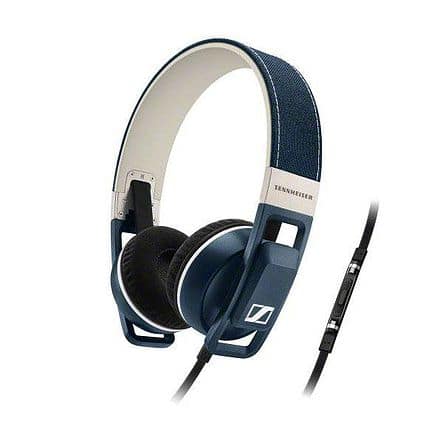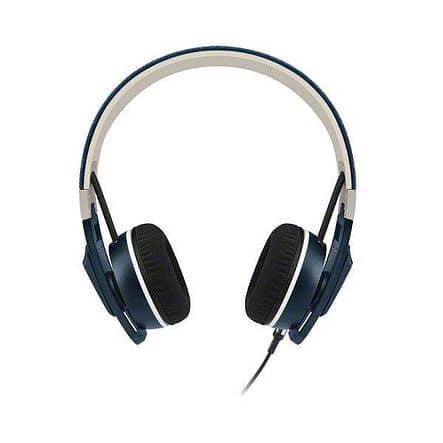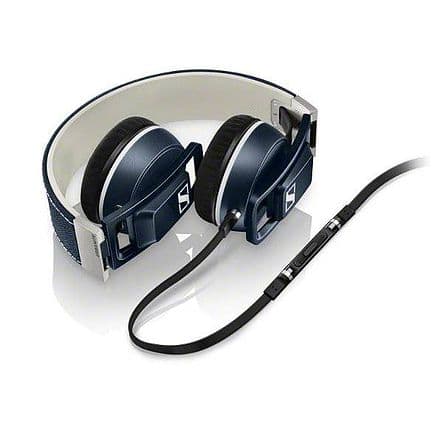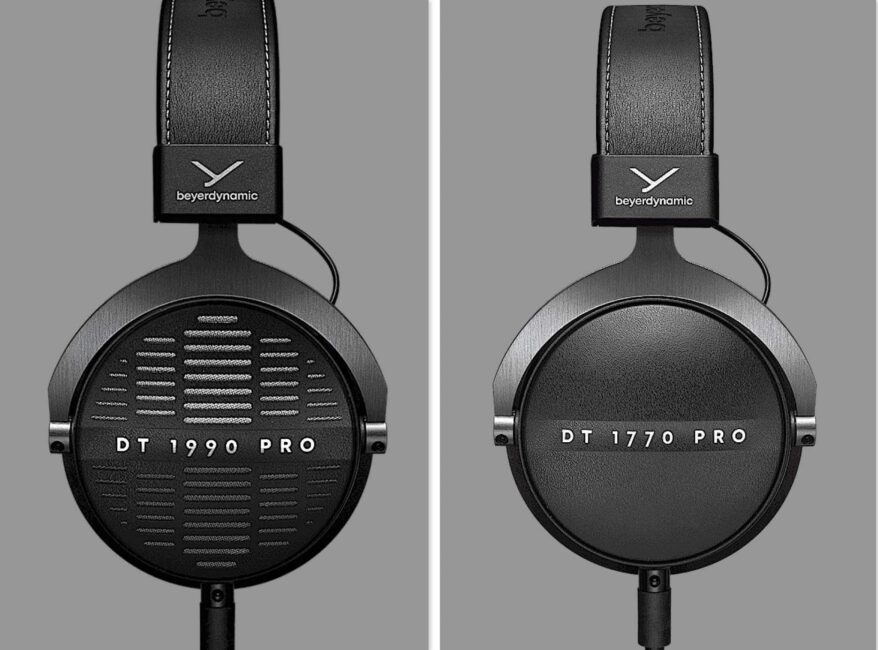The Article
Sennheiser’s Urbanite XL Wireless headphones
3rd November 2015
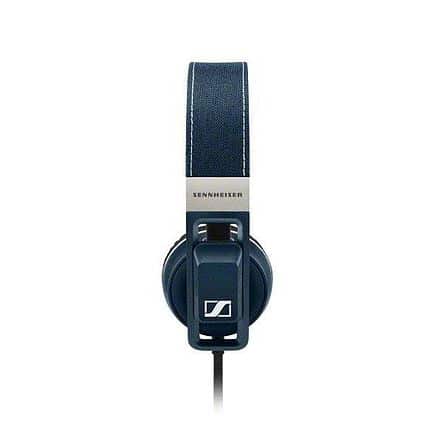
Wire free headphones are becoming increasingly popular. Paul Rigby reviews Sennheiser’s new Urbanite XL Wireless headphones
Walk down the street or mooch around any electronics or technology-based store and you will see, not just how popular headphones are at the moment but also how many manufacturers and types there are available. One of the more sought-after flavours of headphone is the wireless model. The variant has been a holy grail of sorts. To create a top sounding pair of headphones without the continual hassle of having to deal with the long and often tangling lead which also pins you close to your music source. To be free to roam and turn your head and body without tying yourself in knots has always been appealing.
Sennheiser, the long standing German headphone manufacturer, an outfit that has always had a mark of quality attached to its moniker, has entered the fray with its Urbanite XL Wireless headphones, adding Bluetooth and NFC to the basic Urbanite formula. Use of the latest Bluetooth 4.0 standard enables multi-connectivity pairing of up to eight different devices as well as simultaneous connection to two devices.
With a range up to 10m, this pair of closed back, dynamic headphones of a circum-aural design sit on top of the ear.
Available in black, the 18 Ohm design is all about simplicity. Basic lines with no ornamentation but the overall feel is one of solidity. The ear pieces move up and down the padded headband, a simple arch, in a firm manner while the deeply padded ear cups are neat, tidy and precise. Both cups are hinged to swing up into the headband to provide a neat storage option.
From the box, the Urbanites initially feel rather stiff on the head but you get used to the feeling after a couple of minutes as the padding adjusts to your head shape.
A small, glossy, fold-away pamphlet serves as the instruction manual. Picture-based with few words, the instructions tell you that the headphones include a built-in set of Li-Polymer batteries, that can be charged with the included USB cable. Just connect the mini-USB plug into the headphones and the other side into your computer, laptop or USB charger. After a couple of hours in charge mode, the headphones should be able to play music for around 25 hours in total.
To use the headphones, you have a choice of two options. You can either connect the Urbanites directly to your device via a wire controller or, using Bluetooth, wirelessly. The cable controller includes a simple volume slider plus a single button. Press once to play your track, twice to skip to the next track, three times for the previous track…and four times to return to Kansas, presumably. Other combinations fast forward and rewind the track. In wireless mode, the same instructions can be performed by tapping the plastic pad block on the outside of the right side of the ear cup. This ear cup interface is a solid affair without any ‘give’ or feedback. In use, my iPhone failed to recognise this control system. Volume and the like had to be controlled via the phone itself. I had no problem with the cable control system, however. That worked as advertised.
To pair the headphones with a mobile phone, you will need to ensure that Bluetooth has been switched ‘on’ in your phone settings. With your Bluetooth Device List, you should see the Urbanites listed. If not, don’t worry. Return to the headphone and locate the Bluetooth switch under the right ear cup. Push it towards the Bluetooth symbol. A selection of tones will play and a friendly female voice will say, “Connected,” in a rather reassuring way. The connection should be reflected on your phone screen.
All you need to do then is locate your music player and play a song and you’re away. This process, using my iPhone 5S, was easy and trouble free. My handset doesn’t support NFC so I couldn’t test that option.
SOUND QUALITY
I began by playing a simple MP3. Paul McCartney’s I’m Gonna Sit Right Down And Write Myself A Letter, from his Kisses On The Bottom album and compared the Urbanites, in wired mode firstly, in terms of basic sound quality, with the similarly priced B&W P5 wired headphones.
The immediate impression was how the Urbanites projected its soundstage. The Sennheisers offered an expansive and open stage that allowed the vocal to breath and roam within air and space, giving a relaxing atmosphere to the song. In this mode, the upper mids were detailed in their presentation. Piano on the Urbanites, produced keys with a decided spring in their step. Each key added a tippy-toe effect that lightened the entire song. Treble was also more responsive, adding new life and impetus to the percussion.
Despite the bass being a tad amorphous and lacking in structure, on the Urbanites, the lower frequencies offered a good balance to the overall track.
Turning to my MacBook Pro and its built-in headphone socket to play the rather more upbeat WAV rip of Billy Joel’s My Life. Again, the sound stage was open, allowing the Joel vocal to provide emotion and delicacy in terms of his own delivery. Upper mids had an appealing clarity that gave the cymbals an attractive delicacy while Joel’s own piano had drive and power as he forced his way through this dynamic track. Bass did prove to be an increasing issue, however. The Urbanites have a strong bass presence but there was a lack of control in the lower frequency area. This was fine when playing a delicate jazz track but in this rocking piece, the more bass and lower frequencies present, the more they dominated and swamped the midrange, altering the balance of the track negatively.
This unbalanced nature was not an issue with more modern hip hop or R&B tracks where the bass is the focus of the entire track and the rest of the arrangement moves around it. The Sugababe’s song, Blue, was a case in point here. For other dynamic genres, however, the Urbanites tend to struggle.
Returning to acoustic blues from Harry ‘Big Daddy’ Hypolite at 24bit/96kHz, the lack of inherent bass resulted in a very enjoyable and spacious performance. The low bass quotient was a big factor in this result, though.
So how did the sonic performance fair between the Urbanite in its wired state and wirelessly? Playing music in a wireless state, the entire soundstage was pushed further back into the distance. The performance seemed to be happening a couple of hundred yards away which meant that playback lost any sense of intimacy. Instruments did not have the delicacy and immediacy of the wired performance and the attendant detail was rather veiled. The upside of the wireless performance, though, was that the lower frequencies were much better balanced so that more of the upper midrange information could be heard by the ear. On the whole, the wireless soundstage was crafted to present all of the music in a well-rounded, more complete fashion.
That was inside, in the quiet of my reference hi-fi room. Outside, in the cacophony of the city where audiophile concerns are negligable and where these headphones will be used extensively, any wireless sound issues faded away. The Urbanites competed with the urban noise very well, sounding lively and detailed.
CONCLUSION
Presentable and easy to use, the Sennheiser Urbanites are packaged well and are a snip to set up in wireless terms. I’ve tested a few wireless headphones over the years. The Urbanites have to be the best I’ve received thus far both in terms of use and sound quality. The wireless mode was quick to connect and the signal never wavered throughout the testing process.
In doors, in the quiet of a personal living space, with bass-lite music, the headphones performed better in sonic terms as a wired design, approaching audiophile levels of sound quality.
The wireless mode sounded better balanced, overall, while also producing sound quality that would be admirable while walking in a busy urban (so that’s why its called that, eh?) environment filled with traffic noise and other general clamour. If you are in the market for a set of wireless headphones, you need to audition the Sennheiser Urbanites
SENNHEISER URBANITE XL WIRELESS
Price: £250
Website: en-uk.sennheiser.com
Good: Design, wireless mode set-up, soundstage, upper mids
Bad: bass heavy in wired mode, on-ear control system

